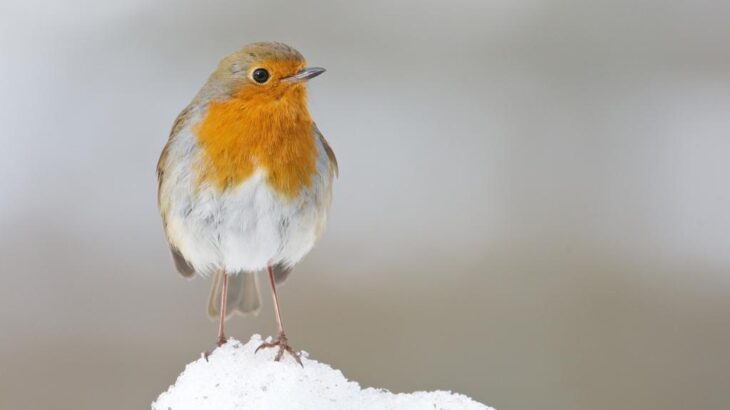Why do we associate robins with Christmas?
When you think of winter wildlife, one of the first things that usually comes to mind is the robin, but why do robins have such a strong association with winter?

This could partly be because there is an increase in robin numbers during the winter months, with migrants from Scandinavia, Russia and Europe joining resident birds when the winters become too cold and food scarce back home. On the other hand, native UK robins generally don’t move very far during the year, only really moving between their breeding and winter territories. Although they look very cute, robins are incredibly territorial. They will even go as far as to fight to the death to defend their territories. Robins usually are also not as shy as other birds when it comes to human contact, with many reports of people hand-feeding them in their gardens.
There are quite a few legends surrounding robins and their relation to Christmas and winter as a whole. For example, have you ever wondered why we see depictions of robins on everything from cards and wrapping paper, to Christmas jumpers and biscuit tins? The first legend takes us back to Victorian times, where the tradition of sending Christmas cards started. Royal Mail postmen, who wore bright red uniforms, delivered these cards. This earned them the nickname of ‘robin’ or ‘redbreast’. Artists usually illustrated Christmas cards with pictures relating to the delivery of letters, such as post-boxes or the postmen known as ‘robins’, and eventually started drawing the familiar little brown and red bird delivering letters instead of the postmen. This trend caught on and became very popular, and continues to this day, with many robin-themed items being seen on supermarket shelves during the festive period.
But before the Victorian associations of robins with Christmas however, there was already quite a strong link with the traditional Christmas story and Christianity. In one tale, it is said that when Mary was giving birth to baby Jesus in the stable, she noticed that the fire that they had lit to stay warm and comfortable was in danger of going out. Suddenly, a small brown bird appeared and started flapping its wings in front of the fire, causing it to roar back to life. However, as the bird flew around tending to the fire, a stray ember made its way towards the bird, scorching its breast bright red. Seeing this, Mary declared that the red breast was a sign of the bird’s kind heart, which would pass on to its descendants to wear proudly forevermore.
The last tale links back to old Celtic-based traditions and tells of the feud between the Holly King of Winter (a wren) and the Oak King of Summer (a robin). The story tells of the Holly King being driven away and having his place taken by the Oak King on the Winter Solstice. However, on the Summer Solstice, the Holly King gets his revenge, and takes the place of the Oak King. This is said to happen every year to represent the changing of the seasons. While this does not have specific links to Christmas itself, it is an interesting tale, which seems to allude to why we see more robins during the winter months.
If you have robins that visit your garden regularly, why not put out some food for them? Mealworms, seeds and suet are all firm favourites and will go a long way towards keeping them well fed and healthy during the cold winter months. In addition, if you have bird baths in your garden, keeping them ice-free and accessible would definitely help to keep any visiting birds happy this winter.
For more ideas, check out our guide to helping wildlife during winter.
Molly Murray
Visitor Centre Assistant
Help protect Scotland’s wildlife
Our work to save Scotland’s wildlife is made possible thanks to the generosity of our members and supporters.
Join today from just £3 a month to help protect the species you love.
Preface
When you think of winter wildlife, one of the first things that usually comes to mind is the robin, but why do robins have such a strong association with winter? …
